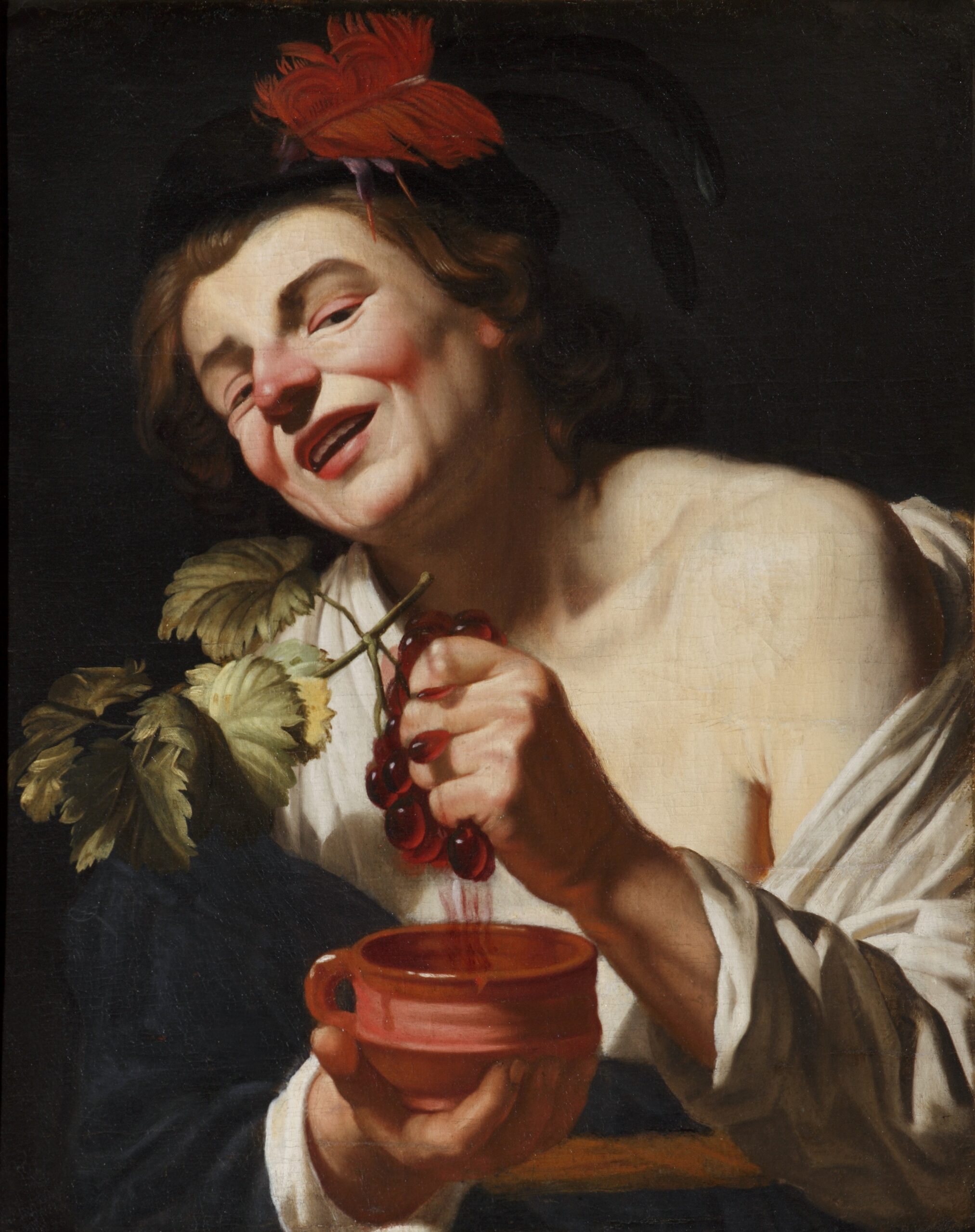Click/Tap the image to see the enlargement
Description
After training in the Utrecht studio of Abraham Bloemaert (1566-1651), Honthorst travelled to
Italy between c.1610 and 1615. There he developed a style broadly based on that of Caravaggio (1573-1610) and his Roman followers, particularly Bartolomeo Manfredi (c.1580-c.1620). While in Rome, Honthorst enjoyed the patronage of prominent collectors, such as the Marchese Vincenzo Giustiniani (in whose palazzo he lived), and Cosimo II de’ Medici, Grand Duke of Tuscany. After his return to Utrecht in 1620, he became the most famous member of the group of Dutch followers of Caravaggio collectively known as the Utrecht Caravaggisti.
The picture must have been executed shortly after Honthorst’s return from Italy, when he was still strongly influenced by both Caravaggio and Manfredi. This composition has been related to Caravaggio’s so-called Sick Bacchus of c.1593, a picture still in the Galleria Borghese, Rome, which Honthorst would certainly have known from his Italian sojourn. The Borghese picture represents a half-length figure of the young Bacchus, wearing a crown of ivy leaves and a white toga draped across his chest (leaving his right shoulder bare) and holding up a bunch of white grapes in his right hand.
An allegorical representation of Taste could also contain a message of moral admonition to the viewer. The Cobbe figure has certainly already imbibed a substantial quantity of his own fermented grape juice, as is evident from his intoxicated demeanour and ruddy complexion, nose and bloodshot eyes. The same potential dual meaning is hinted at in a painting of the Five Senses (c.1625-30; Niedersächsiches Landesmuseum, Hanover) by Honthorst’s fellow Utrecht Caravaggisto Jan van Bijlert (1597/8-1671): there the allegorical figure of Taste, seen on the far right squeezing grapes into his mouth with his right hand, is so drunk that he allows the wine glass in his left hand to spill its contents.
